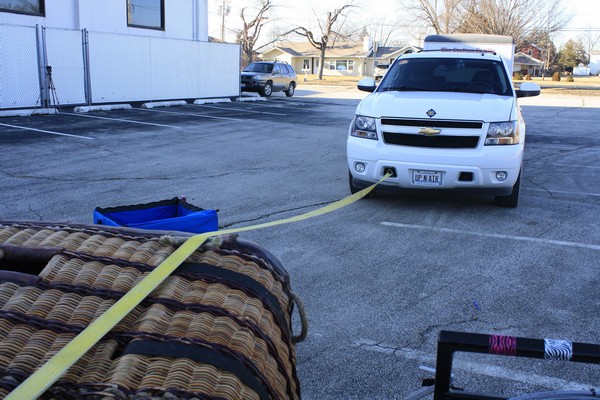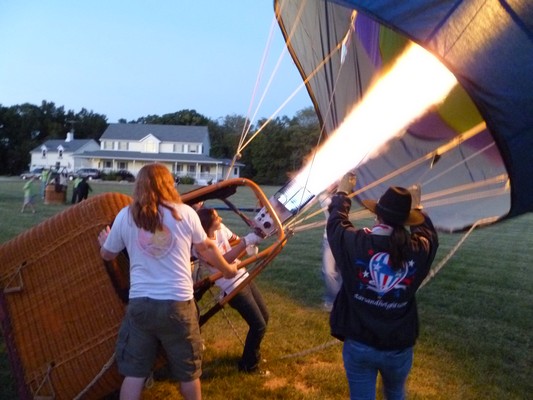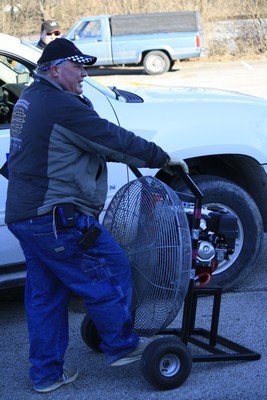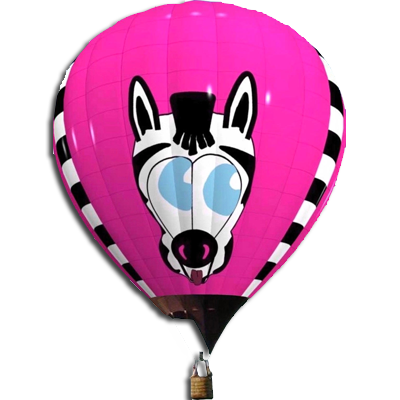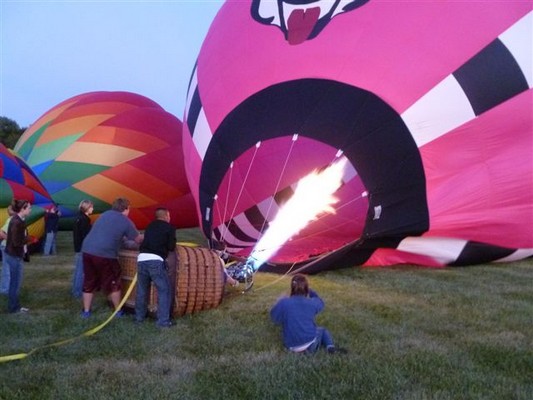
Fire is about to be introduced into the process, which is always an exciting moment. Be aware of the loud sound and the heat generated as the burner is operated.
The pilot has now placed crew members at all the key positions, has given them a briefing on their jobs, and is ready to start the cold inflation process.
Before the cold inflation, the pilot will use a checklist to verify all items are ready. Lots of things start happening now, so it is time to "amp up" your attention.
Pre-inflation checklist
- Tie-off to vehicle is tight
- Fan is checked for stability
- All ropes and lines are in proper position
- All documents, instruments, radios, and safety equipment are on-board and functioning
- Crewmembers are in proper position
The fan is started and the envelope begins to fill. After the balloon is fully packed with cold air, the pilot will signal the throat crew to release the sides of the envelope and move around to the base of the basket. On some systems the throat will remain open without assistance once the balloon is full (and the crown person provides proper pressure), so it is safer for no one to be at the throat during hot inflation.
Hot Inflation
Now that air is packed into the envelope, it is time to warm up that air to make it less dense. Since the burner operates at around 900 degrees Fahrenheit, staying alert and aware during this phase is important. Once inside the basket The pilot will signal the fan operator to go to half speed. Heat is added and the balloon will steadily begin to rise.
Once the bottom fabric leaves the ground, the pilot may signal the fan operator to cut the engine. The fan operator will wait for the blades to stop, go around to the front of the fan, tip the fan back toward them, then move the fan alongside the front wheel of the vehicle. That keeps it out of the way.
Crew who are putting their weight on the basket need to be careful to avoid having their feet under the basket as it rotates upright.
Ryan and the crew perform a steady inflation.
